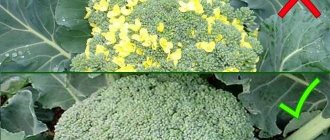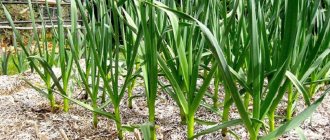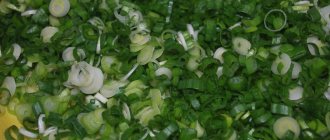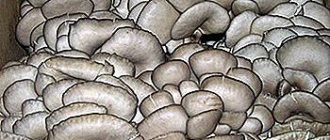Many vegetable growers are faced with a problem: they have grown a crop, but don’t know how to preserve it. Garlic heads are no exception. Of a large harvest, sometimes barely a third can be saved until winter. Bulb crops do not have good long-term storage ability; they rot and mold quite quickly. Even in winter they begin to wither and germinate. What can we say about the spring months, when you really want to pamper yourself with vigorous garlic. However, there are ways to preserve the harvest until spring.
Rules for preparing garlic
The key to good and long-term storage is proper and timely harvesting. The garlic variety should be planted in spring, for example, Yarovaya. This is the variety that is stored well all winter and has good shelf life.
Harvesting begins in mid or late August. If the vegetable is winter, then harvesting begins in July. It won’t be hard to understand that it’s time to collect. The plant begins to turn yellow and dry out. If you harvest later, the vegetable heads begin to grow new roots and eventually fall apart. Dig out the plant very carefully so as not to injure it. To do this, use a shovel or special garden fork.
After harvesting, the garlic is well dried. It can be left directly in the garden to dry, provided the weather permits. If it rains, it is transferred to a shelter and spread in 1 layer. But first, they remove the soil well with their hands; tearing off the stems is prohibited. It takes 10 days to dry the garlic. 2 weeks before the start of harvesting, the bed in which the vegetable grows is not watered.
Choosing Garlic
Not all garlic stores well, whether purchased or grown at home. There are mandatory conditions for everyone:
- the garlic must be fresh, recently harvested or purchased;
- the structure should be hard, not soft;
- heads with branches are not suitable for storage;
- the vegetable peel should be papery and always dry;
- the cloves must be full;
- heads that are rotten, with small spots, cannot be stored in the trash or are dirty;
- if the vegetable has broken integrity, scratches, damaged skin or other obvious damage, it is also not used for preservation.
Tips and tricks
Here are some tips to help keep your vegetables fresh throughout the winter:
- spring garlic is stored at 16-20 degrees and humidity 50-70%;
- winter - at 2-4 degrees and humidity 70-80%;
- damaged cloves are used immediately, without leaving them for the winter;
- It is advisable to store garlic separately from other vegetables.
Read the following article: how often to water tomatoes in hot weather to get a good harvest.
Storage in a bank
Many people know that autumn garlic is preserved much worse than spring garlic. There are several ways in which you can store garlic in any type of glass jar. When storing in a glass container, the main thing is that the garlic is well dried. The roots of the vegetable must be scorched over a fire, and the heads must be disassembled into individual teeth. It is important not to injure the shell and not to pickle the diseased vegetable. Next, the teeth are laid out in three-liter jars, but are not closed with a lid. Glass jars are placed in a dry but warm place where the product will be well stored.
For the second method, take salt. The jar must be sterile, salt is poured into the bottom, and then dry and clean garlic. Then again salt and again garlic. The food is stacked in these layers until the container is completely filled. Then it is covered with a lid and kept for a very long time.
Why should you choose a jar?
To store garlic according to all the rules, you need to understand the main condition. It will remain in excellent condition for a long time if you stop access to germs and air. When storing in banks, the necessary conditions are created. To extend the shelf life, the jars must first be sterilized and thoroughly dried.
Before considering various ways to store garlic in a jar, a few words about general storage rules. Not only the jar is thoroughly dried. The heads themselves must also be dry.
Therefore, if time permits, it is better to postpone harvesting garlic to a non-rainy day.
Both peeled and unpeeled garlic can be stored in glass containers. Some housewives, in order to save space, disassemble it into cloves.
Cold storage
Be sure to clean all the slices first
How to properly store garlic in a jar in the refrigerator? Any type of garlic is suitable for storing in the refrigerator. It is the winter product that is poorly stored in a warm apartment. To start storing the vegetable in the refrigerator and in a glass container, peel it and select only healthy cloves. But it is possible to close it a little. To do this, the cloves are cleaned and placed in a glass container. Then cover with a lid and put in a cool place.
To store garlic in a vacuum and a cool place, just use a simple bag and a device that draws in air. This creates a vacuum in which the product will sit well in the refrigerator for a long time.
Storage in the apartment
Every housewife uses garlic every day to prepare various dishes, so you need to stock up on it for the winter. For this purpose, there are many types of product storage in the apartment. One of the most popular methods of preserving food at room temperature is braiding. This method will be good if the gardener did not have time to get rid of the stems during harvest. The recommended number of heads in a braid is approximately 13-15 pieces.
To braid a braid, make the following movements:
- you need to take 3 stalks of garlic;
- they begin to braid the braid from the bottom, adding new stems: to keep the braid well, add regular twine or thread to it;
- then they make a loop to make it convenient to hang in the kitchen or room.
In addition to such storage methods, cardboard boxes, bags, nylon tights or vegetable boxes are used. The container must be well ventilated. The vegetable must be dried well, and then transferred to a prepared container and stored in a dark place. It is worth remembering that the product must be sorted once a month, because it can deteriorate, rot and dry out. The diseased heads are pulled out and thrown away so that they do not infect the rest of the vegetable.
Garlic, pickled with individual cloves
This recipe allows you to place the garlic in small jars, which will significantly save space, but the cooking process is somewhat more labor-intensive.
First, you need to thoroughly clean each clove so that no husk remains at all. Then the peeled garlic should be doused with boiling water and placed in cold water, you can add ice. Boiling water will remove excess bitterness, and ice water will allow the garlic to remain crunchy.
For the brine, you need to mix water and apple cider vinegar in a 1:1 ratio, add salt (2 tbsp per liter of brine) and sugar (1 tbsp per liter). Boil the brine, add black peppercorns and bay leaf.
Sterilize the jars by holding them over steam and boil the lids. Place the peeled garlic in jars, fill with brine and close with lids. Turn upside down and let cool at room temperature. You can store the workpiece not in the refrigerator, but simply in a cool, dark place. In a week the product will be completely ready for use.
To prevent garlic from spoiling
There are several methods that help reduce the appearance of rot or mold throughout the shelf life. To begin with, you should know that when drying the crop, it is laid out in 1 layer in the sun. The first day the vegetable is kept in the sun for 5 hours, and then for 10 days it is taken out every day into fresh air. This is a must to prevent germs, pests and other possible damage.
To prevent garlic heads from drying out, they need moisture and normal temperature. Due to lack of moisture and too high temperatures, the vegetable dries out very quickly. To do this, take a paraffin candle and break it into pieces. Next, it is heated in a water bath. Take each head of vegetable in turn and dip it in warm paraffin. In this way, the product will be stored in a shell, which will prevent high temperatures from penetrating and maintain a normal amount of moisture.
To prevent the product from starting to germinate, it is doused with fire, since there is a high probability of germination, and after that the cloves become soft, begin to rot and bend. To prevent this, light a candle and bring the vegetable with its bottom side to the fire. The fire burns the roots and never allows them to sprout.
How to store garlic at home
The most convenient way to preserve any vegetables is in the basement or cellar. In such conditions they do not deteriorate or rot. Before placing the crop in the basement, make sure there is sufficient ventilation in the room and that there are no small pests or mold. When the preparatory work is completed, you can begin organizing storage.
Experienced gardeners know many ways to store vegetables at home. Some people store it in jars, others in bags. Everyone chooses to their own taste.
Ways to store garlic in the basement:
- In the ashes. Cover the bottom of the box with newspaper or paper and fill it with fine ash to a level of 3-5 cm. Insert the heads of garlic into the ash, bottom down, and cover them with ash on top. In such conditions it can be stored for more than six months.
- In onion peels. If you have a lot of peels left after harvesting the onions, then fill the box in which you are going to leave the garlic with it. This way the vegetable can survive the whole winter.
- In boxes and boxes. The easiest way is to store garlic in boxes or boxes. In this case, you don’t have to cover or pour anything over the vegetable, but leave it in its pure form. The boxes should have slits or holes so that the garlic receives a sufficient dose of oxygen. However, do not place the box close to vegetables such as carrots, cabbage and beets.
- In sawdust . As an addition, you can fill the box with pine sawdust. The main thing is that they are dry. Sawdust absorbs moisture well and protects the crop from rotting and pests.
- All not. It is believed that storing garlic in a box of hay will preserve its aroma and taste throughout the winter. Make sure that the heads in the drawers do not touch each other.
- In the ground. In the same way, dry soil can be poured into a box or box with garlic. Garlic lies in the ground for 5 months. The storage method is suitable for both spring and winter varieties.
- In nylon stockings. One of the most unusual storage methods. Due to the fact that the material allows oxygen to pass through well, the garlic will not spoil until spring. Fill the stocking with heads to the very top, tie it in a knot and hang it from the ceiling. The method is also good because it does not clutter up the shelves and passages in the room.
- In braids. An old and proven option for storing vegetables. As with stockings, braids save a lot of space. Garlic must be prepared at the harvest stage. After digging up a vegetable, do not cut off its stems. They will be needed for weaving. When the garlic is dry, take the wire and bend it at one end, forming a hook. Place the heads on opposite sides of the wire and begin to weave the tops, also weaving the wire into the braid. When the braid is ready, hang it in a convenient place for you by the hook.
Ways to store garlic in an apartment:
Not everyone has an equipped cellar on their plot of land. What can we say about those who come to the dacha from the city. The lack of a basement in a high-rise building is also not a problem. You can also store garlic in your apartment. In order for it to survive the winter, it is necessary to comply with the main requirements: prevent exposure to ultraviolet radiation, protect it from moisture and high temperature.
How to properly store garlic at home?
- In the bank. Storing garlic in a jar is a simple and convenient method. The vegetable, peeled or peeled, is placed in a three-liter jar. Some people fill it with vegetable oil or cover it with salt. In the second case, it is necessary to seal the container with a plastic lid. Tight lids will not work because they will block air access. If you store garlic unpeeled, then the jar can be left open.
- In a refrigerator. Before storing the garlic in the refrigerator, dry it and place it in a paper bag or vegetable container. To increase the preservation period, add salt or onion peels to the bag.
- In salt. Sort and dry the garlic, prepare containers for storage. Both wooden boxes and ordinary glass jars will do. If you decide to store it in a box, then pour a layer of salt on the bottom, lay out the garlic and cover it with salt again. Repeat layers several times until the box is completely filled. The jar is filled with one-fifth salt. The heads are placed on top and the procedure is repeated exactly as with the box. Salt will protect the crop from excess moisture and unpleasant odors, and preserve the taste and aroma.
- In oil . Storing garlic in this form gives it a special taste and also increases its shelf life by up to a year. Peel the garlic and divide into cloves. Wash the jars, sterilize and fill with any oil to taste: olive, sunflower, etc. The garlic should be completely covered with oil. Bury the jar and put it in a convenient place. However, it should be remembered that after opening such a product must be eaten within 30 days. Or it will go bad. Once all the garlic has been used, you will be left with a flavorful oil. It can be used to prepare delicious dishes.
- In flour. Choose a container that is convenient for you: a box, box or jar. Fill it with a layer of flour of any kind and place the garlic in it, bottom down. Must be stored closed. Flour perfectly absorbs moisture and will prevent the formation of mold on the vegetable.
- In a fabric bag. The bag must be soaked in saline solution and dried. This treatment will reduce the risk of mold and increase shelf life. The vegetable will easily last until spring or until the next harvest. The bags are left open so that the vegetable receives oxygen.
Shelf life of garlic
On the heads of the vegetable there are scales that protect the vegetable from drying out and environmental influences. There are many more such scales on spring varieties, which is why it is stored longer. Winter garlic dries out faster and loses its taste and smell. Therefore, it is often used for autumn planting for the winter.
Spring garlic can be stored for six months to a year. Winter - from 3-4 to 6 months.
Even if you take good care of the storage conditions, in some cases the garlic begins to deteriorate. Don't rush to get rid of the vegetable. The harvest can still be saved.
- Yellowness . If you notice a yellowish tint on some heads, it means they have become infected with fungus. Isolate damaged fruits so that the fungus does not spread to them. Check healthy garlic periodically.
- The appearance of sprouts. If the vegetable is stored at too high a temperature, the garlic will begin to sprout. Check the room and try to lower the temperature. This will help slow down the growth, but it still won’t get rid of the sprouts completely. This garlic must be consumed as soon as possible.
- Drying. In a poorly ventilated room and with a lack of oxygen, garlic will begin to quickly dry out and break. Restore air circulation or change storage method. Then the vegetable can be saved from completely drying out.
- Mold. Garlic begins to rot in an excessively dry and warm room. If you notice that some heads have deteriorated, separate them from healthy ones, trim them and use them for food.
Storing garlic for the winter at home is possible if you know how to store it correctly. If all conditions are met, garlic will last a long time. Just check your crop periodically to avoid defects.











